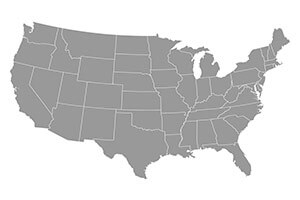
Our reports from the field continue to reinforce the old saw that “all beekeeping is local.” As a vivid example, a correspondent in southwestern New Hampshire reports lower-than-average honey crops for 2019, while less than two hours to the east we hear of “once-in-a-lifetime” crops for some beekeepers.
Northeast
Adequate ground moisture in New Hampshire bodes well for spring pollen production. Movement of retail and wholesale honey is fair in the state, though one reporter laments the amount of honey coming into the state for resale — often under a local label and without disclosure of origin; some beekeepers “are better at selling honey than producing it.”
The temperature hit 60 degrees Fahrenheit on January 10 in northern New York, and there were several flight days during the month. Retail sales in the state have been good, especially for small hobbyists, as consumers trust their product to be “pure and raw.”
Central Pennsylvania reports a slow wholesale market due to low prices. But the northeastern part of the state is seeing brisker sales and short supplies. One reporter says 2018 and 2019 have been excellent overall, with “some of the best flows in recent memory.” But finding ample forage contines to be a challenge, as “it’s becoming less common for farmers to plant crops that feed pollinators.
Maine beekeepers generally prefer nucleus colonies over package bees for expansion, as the season is just too short for packages to get a decent start.
Mideast
Kentucky honey is selling well at wholesale and retail. The sassafras weevil that damaged tulip poplars in both Kentucky and Tennessee last year may be a problem again if this winter continues to be mild. A fall drought, and resultant poor fall honey crop, means heavy feeding will be necessary heading into spring to avoid heavy colony losses due to starvation.
Winter was also mild in the early-going in Virginia. Honey stock has been selling well wholesale and retail.
Tennessee has seen a warm early winter with lots of rain, and overly-active bees are eating through their stores, making feeding necessary.
Southeast
In Florida, early winter weather conditions were good; that and good ground moisture mean the outlook is good for the orange crop, depending on whether there is a killing freeze. Wholesale honey is not moving, but retail is selling well.
Georgia, is seeing the same mix of strong retail sales but a lousy wholesale market.
In Alabama it’s “hot one week and cold the next,” and bees are eating through their honey stores. Facebook marketing is an effective driver for retail sales.
Southwest
Retail sales are good in Louisiana, and demand continues for local honey. But beekeepers are reluctant to expand operations in light of the lousy wholesale market.
New Mexico sees better sales of both wholesale and retail honey. Winter weather has been good thus far, and the outlook for spring looks positive
East Central
Cranberry pollination is becoming more attractive to Wisconsin beekeepers, and they are pushing state regulators to enforce stricter compliance and inspection rules on pollinators coming into the state. Unfortunately, as in many states, many retiring beekeepers are not being replaced by the younger generation. Wisconsin beekeepers are finding California package bees more expensive due to high shipping costs; that, coupled with unreliable delivery times last year due to cold, wet weather on the West Coast, is pushing more beekeepers to order their bees form the South instead. Some beekeepers are discovering that value-added wax products are more profitable than bulk beeswax sales.
Illinois honey production was down in 2019, so supplies were tight. Retail demand is good but wholesale is not. Winter so far has been warm but wet. Continued demand for nucs means local suppliers will probably sell out early.
December was cold in Michigan but January was warmer. Strong retail and wholesale demand for honey and….


